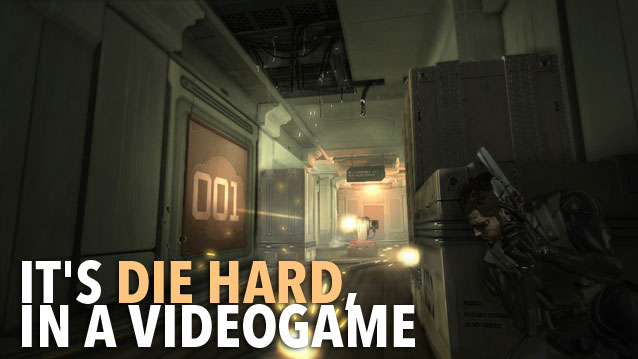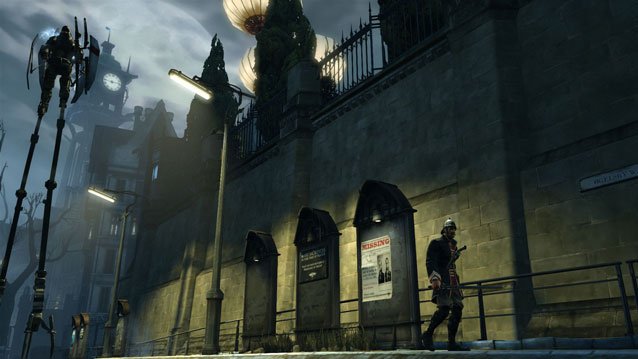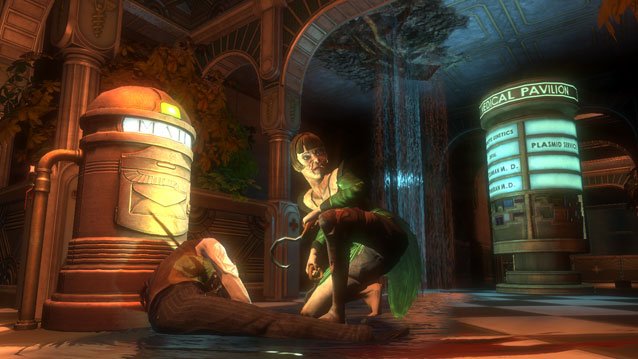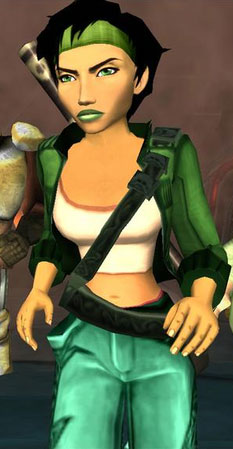


If you've ever tried to discuss games with someone whose experience goes no deeper than Farmville you can understand the difficulty in explaining why anyone would remake Half-Life once, let alone the existence of a fan project to remake it a second time. I recently struggled to make a friend understand the appeal of that magnificent slow opening, the sudden explosion of violence, the lonely journey through a mazelike complex in the face of overwhelming force. It didn't take long to realize what would put the experience in the proper context. "It's Die Hard," I said, "In a vast underground lab."
Many games are Die Hard, which should not surprise us because modern videogames emerge from the cultural context of late-century film, and an fairly large number of movies are Die Hard. The original spawned a lineage of imitators that continues to this day. We have had Die Hard in cruise ships (Speed 2), battleships (Under Siege), and spaceships (Lockout), in planes (Con Air), trains (Under Siege 2), and automobiles (Speed). In the late '90s the phrase "It's Die Hard, in a _____" became so ubiquitous that a joke went around about a movie pitching itself as "It's Die Hard, in an office building".
This cultural phenomenon arose because Die Hard delivers on a very fundamental power fantasy. In the face of a distant tragedy, someone will always say that if he had been there, things would have turned out differently. We've all been around, or simply been, the guy who says, "I would have taken away a box cutter and stabbed those guys to death with it," or "I would have beat Sandusky to a pulp, then dragged him to a police station." Die Hard brings that fantasy to life with an ordinary guy who stands up to an organized and deadly attack by exceptional thieves.

That can be hard to fully appreciate, because almost 25 years later, we are accustomed to seeing Bruce Willis as an action hero. At the time, however, Willis was primarily known as a comedic actor for his work on the (also iconic) television show Moonlighting, and this helped him bring an everyman quality to the role. John McClane was an ordinary, balding cop, not a mighty commando or space marine. Viewers - especially male viewers - identified with his less-than-ideal looks and relationship failures. When McClane triumphed, it was as if they triumphed, an emotion the film accentuates in its final moments with sad-sack desk cop Al Powell's apotheosis as a revolver-wielding badass.
This power fantasy - "I could be the one guy to stand up in a crisis" - is precisely what modern shooters are tuned to deliver. The shooter simply replaces the vicarious triumph experienced by the viewer with the personal victory of the player.
The resemblance doesn't end there, however, because Die Hard's story is intimately entangled with the details of the structural space in which it occurs. Almost immediately after the thieves attack the Nakatomi building, McClane scrambles up the stairs, cataloging each floor and what it contains. Offices on 31, construction on 32, computers on 33 - this quick survey establishes spatial relationships that inform the rest of the film, so that the audience always knows where McClane is and how his position relates to Hans, Karl, and the rest of his foes.

The film uses a similar trick when, after taking out the first of the thieves, McClane gets to the roof through the elevator shaft. His first passage through the mechanical area serves to contextualize his later retreat into an airshaft and duct, a traversal method much used in the shooters and stealth games that would follow. Making sense of the events in Die Hard requires an eye for the details of the space in which it occurs. This intimate linkage between structure and story is also characteristic of the best level design in games.
The relationship between the building and the plot also leads to a pacing that many modern games have adopted. Cinematic action games, typified by the Uncharted series, intersperse combat sequences with environmental traversals. Movement in these games serves to relieve the pressure of combat and establish the nature of the environments. Die Hard adopts a similar rhythm for much the same reasons.
McClane kills a thief, then climbs up to the roof. After an abortive radio call, a gunbattle ensues. McClane retreats into the building and crawls through a vent to escape. He kills two more of the thieves, then retreats upstairs as their allies arrive. All the while, he takes weapons and ammo from his dead foes. McClane's traversals provide a consistent challenge and serve to emphasize the tight quarters in which the plot takes place. Except for the low bodycount, this could be a sequence from any number of games.
Die Hard also makes significant use of the environmental storytelling that videogames are often praised for. The models on the 31st floor, for instance, lay out the power and breadth of the Nakatomi corporation in a remarkably efficient way. Meanwhile, the artworks in the vault and the famous "Fallingwater" centerpiece of the 30th floor reflect a contemporaneous paranoia that Japanese businesses were taking over America. These cues in the setting add a subversive subtext to the film: the sets agree with Hans Gruber the terrorist, even as the plot villifies Hans Gruber the thief.

A movie so concerned with the details of the physical space faces a challenge when it comes to building any sort of direct conflict between its protagonist and antagonist. Additionally, it needs some way to keep McClane aware of (and reacting to) the situation, which would be difficult to do with the police 30 floors below him. Die Hard solves these problems through the medium of radio, which allows Hans and McClane to square off against each other long before they meet face-to-face. At the same time, McClane's conversations with Al serve not only to keep him apprised of his allies' movements, but also humanize him and maintain his everyman status in the face of his amazing exploits.
Shooters face similar challenges, because the typical staging of gameplay demands that the viewpoint remain with the protagonist throughout. Using radio communications to offer comfort and confrontation at a distance allows developers to compensate for the limitations of their limited field of vision. The dialogue also creates an opportunity (too rarely used) to create the character without forcing him to talk to himself all the time. Faced with similar problems to Die Hard, videogames employ a similar solution.
The easy joke is that so many video games seem like Die Hard because their settings are rendered in grays and browns and their protagonists are 30-something white dudes with short brown hair. Fundamentally, however, Die Hard shares with videogames many of the features that made it so striking that it spawned its own subgenre of action film. Videogames emulate Die Hard in the nature of their power fantasies and in the significance of physical space in creating and pacing the story. They respond to the challenges and opportunities inherent in this structure in similar ways, with remote conversations and environmental storytelling.
Die Hard appeared at the dawn of the modern era of gaming, one year after the introduction of the VGA standard, and four years before Wolfenstein 3D gave rise to the first-person shooter as we know it. It cast a long shadow over action cinema, with copycat films appearing to this day. In the medium of videogames, its influence might be even greater. Shooters of all varieties consistently strive to deliver the Die Hard experience: an isolated hero taking on a well-armed, well-organized foe, using the space they have seized against them.



